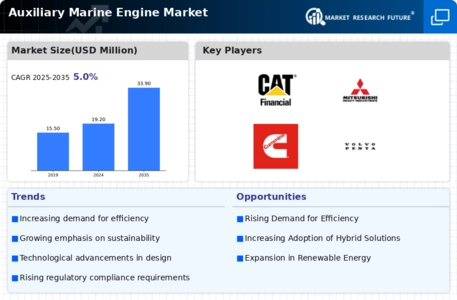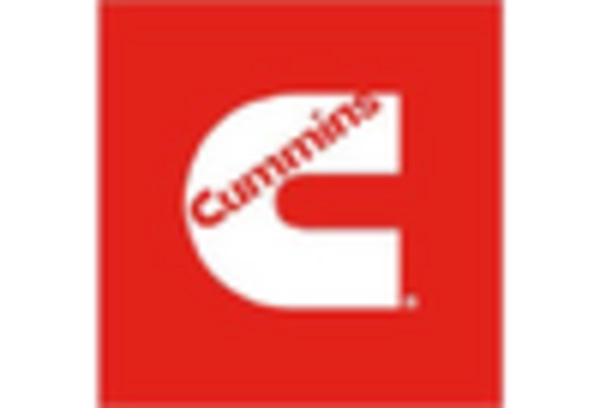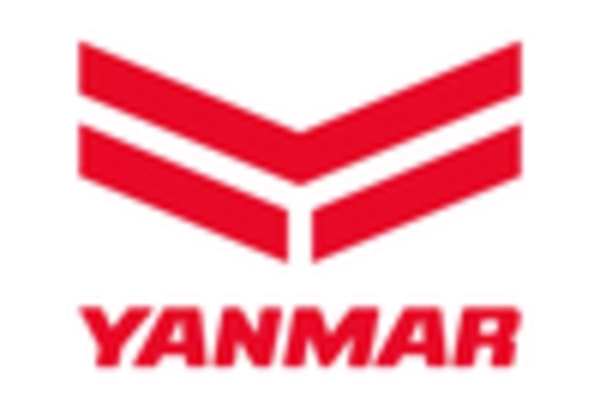Market Share
Marine Auxiliary Engine Market Share Analysis
In the Marine Auxiliary Engine market, companies are strategically positioning themselves to meet the evolving demands of the maritime industry for reliable auxiliary power solutions. Marine auxiliary engines play a critical role in providing supplementary power for various onboard systems, including generators, pumps, and propulsion systems, ensuring the smooth operation of vessels across diverse marine applications.
One fundamental strategy within this market is differentiation. Companies aim to differentiate their marine auxiliary engines by offering unique features, performance characteristics, and specialized solutions tailored to the specific requirements of different types of vessels and maritime operations. This could involve developing engines with varying power outputs, fuel efficiency, emission levels, and compatibility with different propulsion systems and fuel types. By providing auxiliary engines with distinct advantages over competitors, companies can attract customers seeking dependable and efficient power solutions, thereby gaining a competitive edge and increasing their market share.
Pricing strategies also play a significant role in market share positioning within the Marine Auxiliary Engine market. Some companies may adopt a cost leadership approach, aiming to capture market share by offering their engines at competitive prices compared to rival products. This strategy can be particularly effective in segments where cost-conscious shipowners prioritize affordability without compromising on engine performance or reliability. Conversely, other companies may pursue premium pricing, positioning themselves as providers of high-end auxiliary engines with advanced features, durability, and environmental compliance. While this approach may limit market share in terms of volume, it can lead to higher profit margins and revenue from customers valuing top-tier engine technology for their vessels.
Additionally, distribution strategies are crucial for expanding market reach and capturing a larger share of the Marine Auxiliary Engine market. Companies may establish strategic partnerships with shipbuilders, marine equipment suppliers, and engine distributors to ensure widespread availability and adoption of their engine solutions. Moreover, investing in efficient distribution networks, logistics infrastructure, and after-sales service capabilities can enhance accessibility and customer satisfaction, ultimately driving sales and market share growth. By optimizing distribution channels and providing seamless access to their products, companies can increase their market share and establish a strong presence in the marine auxiliary engine market.
Marketing and branding efforts also play a vital role in market share positioning within the Marine Auxiliary Engine market. Companies invest in targeted marketing campaigns to raise awareness of their brand and engine offerings among shipowners, ship operators, and maritime industry stakeholders. This may involve showcasing the reliability, performance, and environmental benefits of auxiliary engines through demonstrations, case studies, and testimonials. Additionally, participating in marine industry exhibitions, trade shows, and conferences can provide opportunities to showcase new products, network with key decision-makers, and build partnerships. By effectively communicating the value proposition of their engines and building a reputable brand image, companies can enhance their market share and competitiveness in the marine auxiliary engine market.
Furthermore, continuous innovation is essential for maintaining market share positioning and driving growth in the Marine Auxiliary Engine market. Companies must invest in research and development to develop next-generation engine technologies, improve fuel efficiency, reduce emissions, and enhance reliability and durability to meet evolving maritime regulations and customer preferences. By staying at the forefront of technological advancements and offering innovative engine solutions, companies can attract new customers, retain existing ones, and solidify their market share in this dynamic and competitive sector.

















Leave a Comment